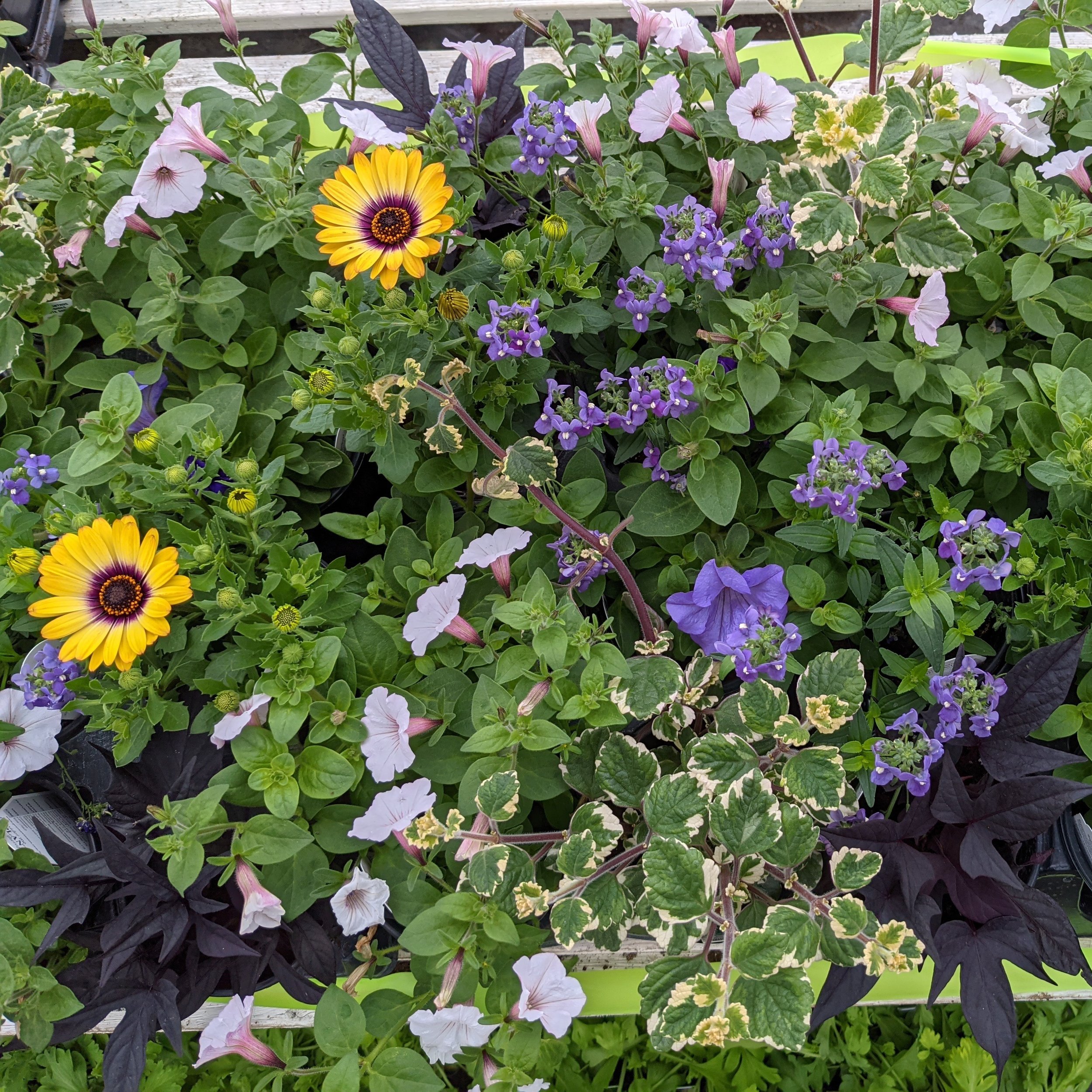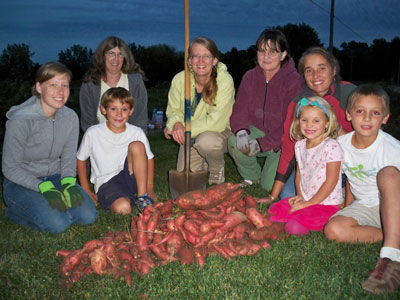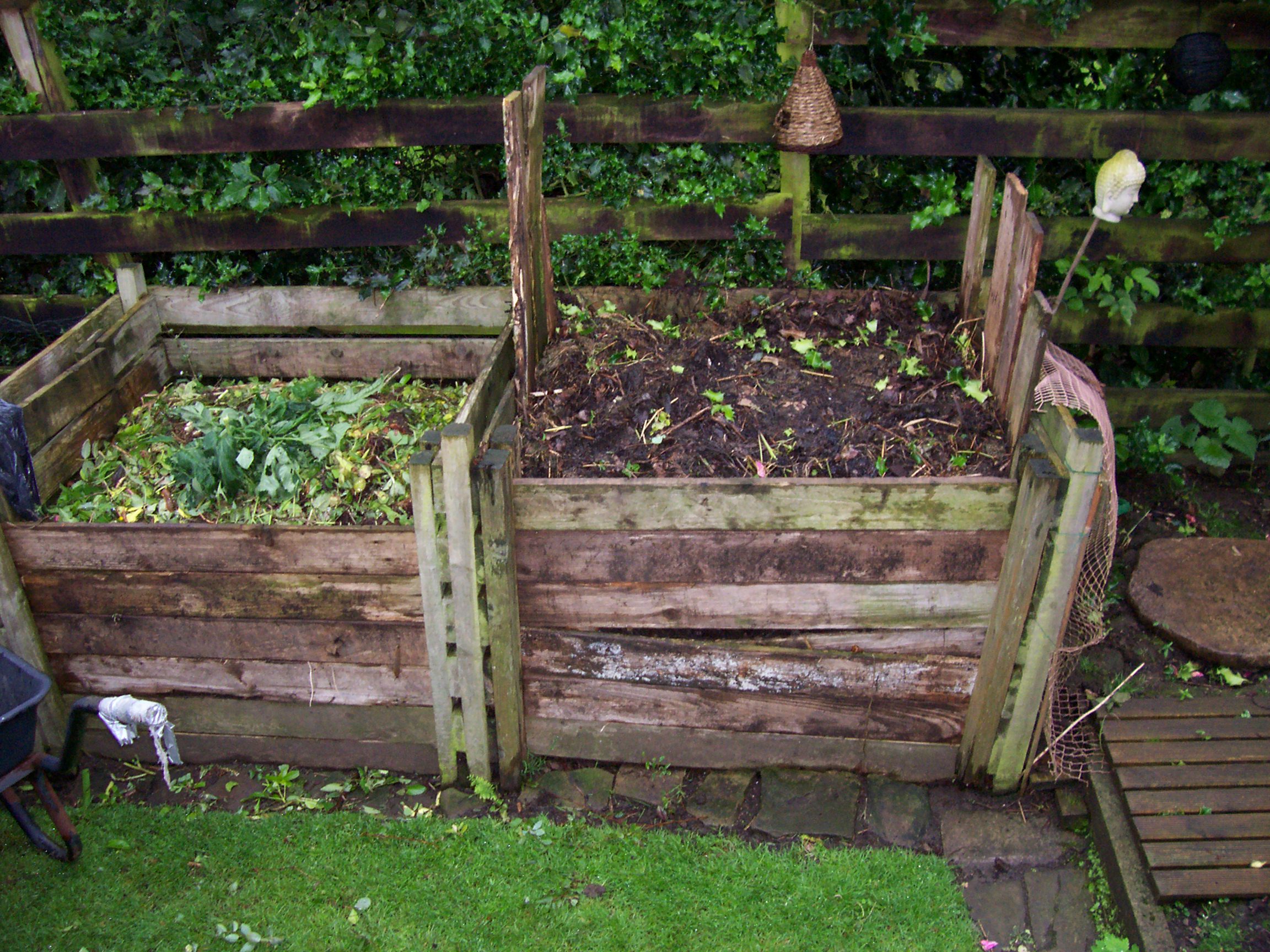Red Wagon Plants operates as an organic agricultural business. What does this mean for pest and disease management?
Beneficials, our best friends
When visiting our greenhouses you will occasionally find a hanging basket with nothing but tall grass growing in it. Aesthetically maybe not quite pleasing enough to hang on your front porch, and you might wonder what it’s doing here! When you look more closely, you will see that the grass is covered in little black aphids. Depending on how long this ‘banker plant’ has been in use, you will likely also find aphid-sized golden balls attached to the blades of grass. Some of them have a tiny hole cut into one end.
Parasitized aphid mummies
What’s going on here? One of our best and most effective ways to control aphids is the use of parasitoid wasps. If you’re imagining a swarm of yellow jackets buzzing around in our greenhouses, let me paint a different picture: These tiny wasps are less than an ⅛ of an inch long and won’t sting us, so they are not very scary to humans. Aphids are the ones that should be afraid, though. The female wasps lay their eggs into live aphids! When the egg hatches, the larva eats the aphid from the inside, then pupates, turning the dead aphid into the golden-tan mummy out of which it emerges.
We use these beneficials as a preventative measure, so we may not have aphids in our greenhouses when we release them, but we want them to be ready as soon as we have an aphid outbreak. This is where the banker plants come in.
The banker plants - made up of some species of grain and bird cherry-oat aphids - is a nursery for the wasps to lay their eggs in. Bird cherry-oat aphids will only attack cereals and not other crops in our greenhouses, so we are not spreading one pest while trying to manage another.
There are various types of parasitoid wasps, many of which will also visit your garden and aid in your pest management. One of my favorites are the ones that lay eggs on tomato hornworms and eat them up from the inside!
Parasitoid wasps are not the only invertebrate helpers we employ here at Red Wagon Plants. There are many other beneficials that can be used as a preventative measure. Most of them specialize in eating aphids, thrips, spider mites or all of the above, as well as other tasty pests.
Lacewing larva enjoying an aphid meal
Scouting for pests and diseases
Besides beneficials, scouting is the key ingredient to good pest and disease management. This means taking a close look at one plant of each variety each week. This is a lot of work, but it keeps us up to date with what is going on in the greenhouses. As soon as a pest or disease is detected, we can intervene. Oftentimes this means squishing pests by hand, picking off diseased leaves, or moving plants to a dedicated “hospital” area for special treatment and monitoring. Knowing where the pest hotspots are, tells us the most effective place to spread our beneficials each week.
Only if all other measures fail, do we apply broad-spectrum insecticides. Even though these products are approved for organic production, they do not differentiate between friend and foe. So we use them very sparingly and in a localized manner. This is how Integrated Pest Management (IPM) differs from conventional pest control: We only spray after a certain level of pests have been detected, not on a calendar schedule. This has obvious benefits for the environment, and the health of staff and customers.
Preventative Sprays
As any gardener in Vermont knows, fungal diseases are widespread in our humid climate. To limit diseases like powdery and downy mildew, we use preventative sprays. Some of these products actively kill spores on contact by drying them out and changing the pH level. Others contain a beneficial bacterium that will compete for space with pathogens. This means that if the beneficial bacteria is there first, the mildews have less room to spread. Unfortunately every new leaf that grows will need to be treated with this beneficial, so this spray is applied on a weekly schedule as soon as conditions are conducive for mildews. So if you see me walking around at Red Wagon Plants with a Ghost-Busters backpack sprayer, that’s likely what I’m doing!
A display of healthy blooms and foliage plants
This post was written by Kat Consler, RWP’s Integrated Pest Management specialist.

















